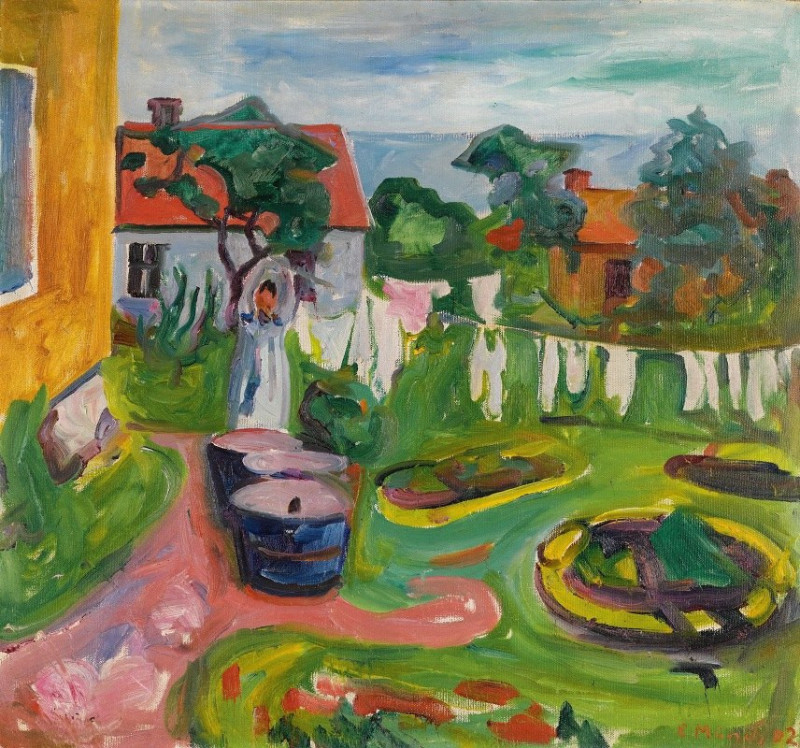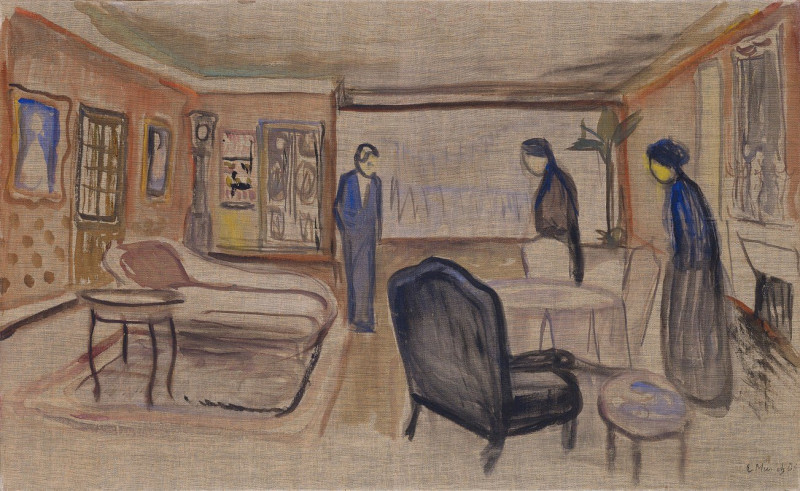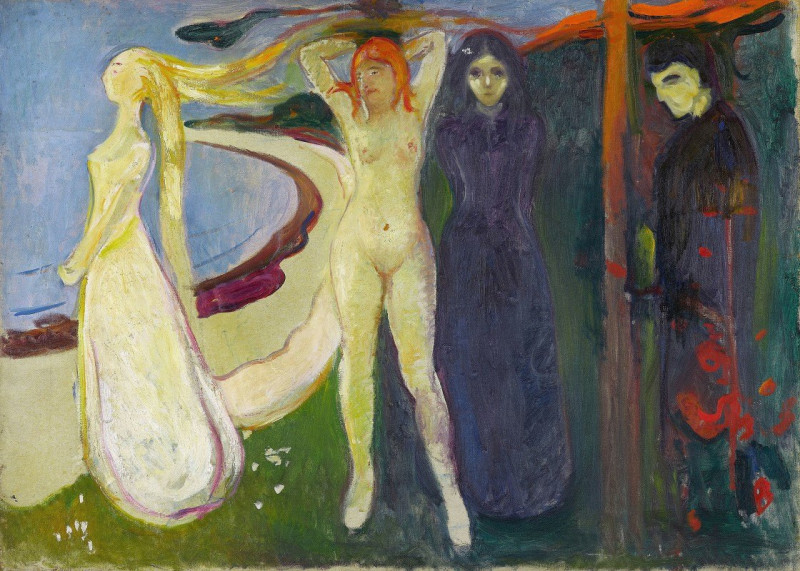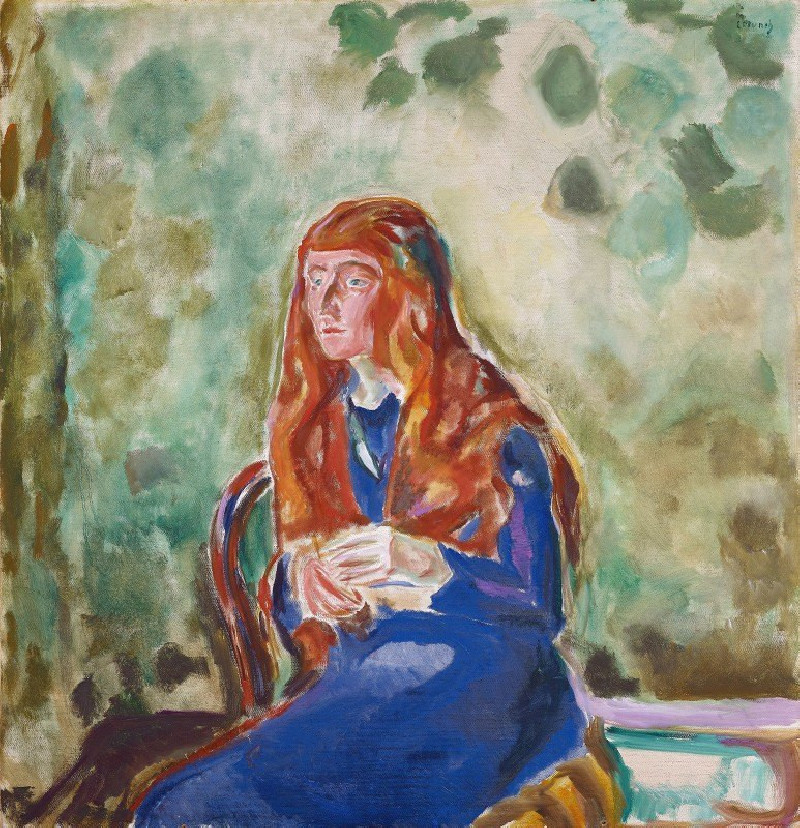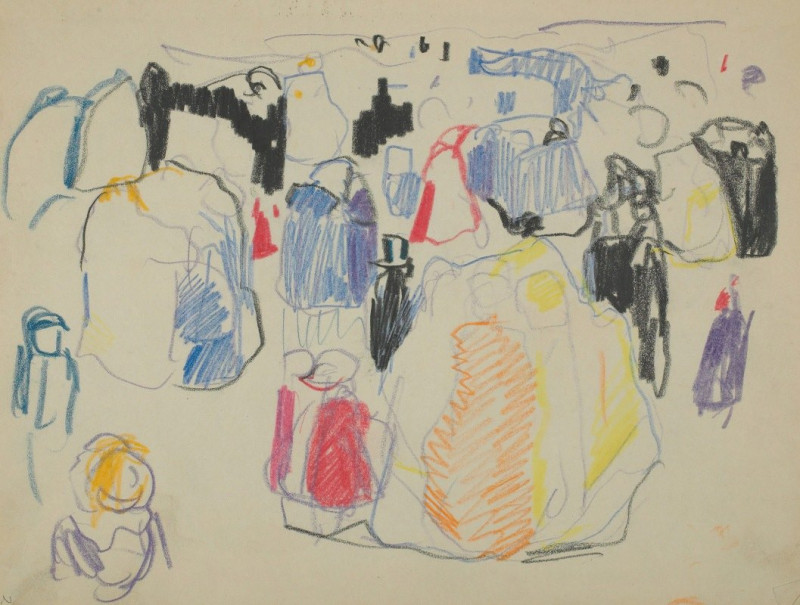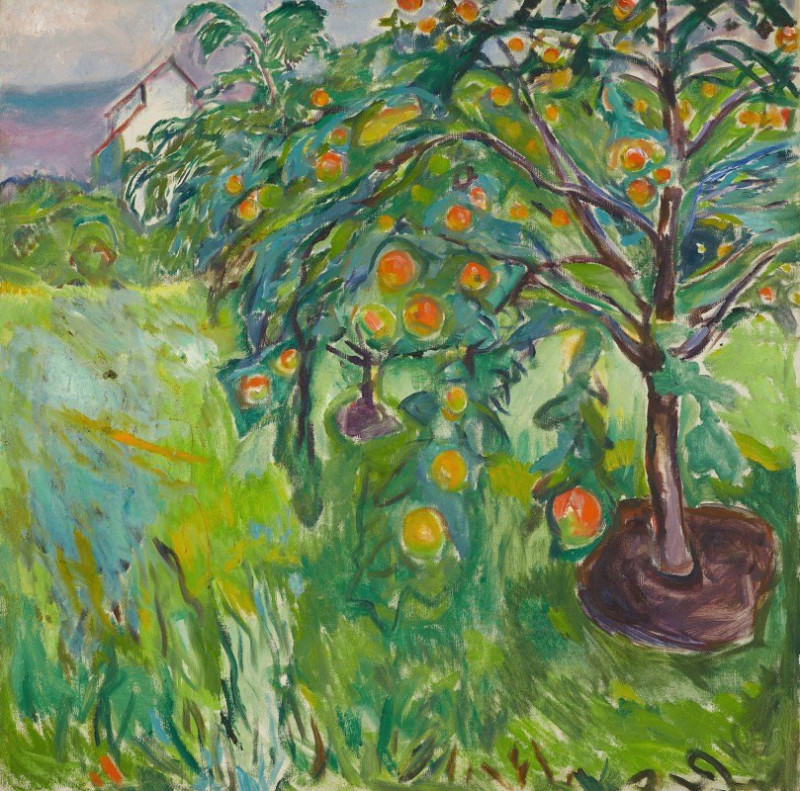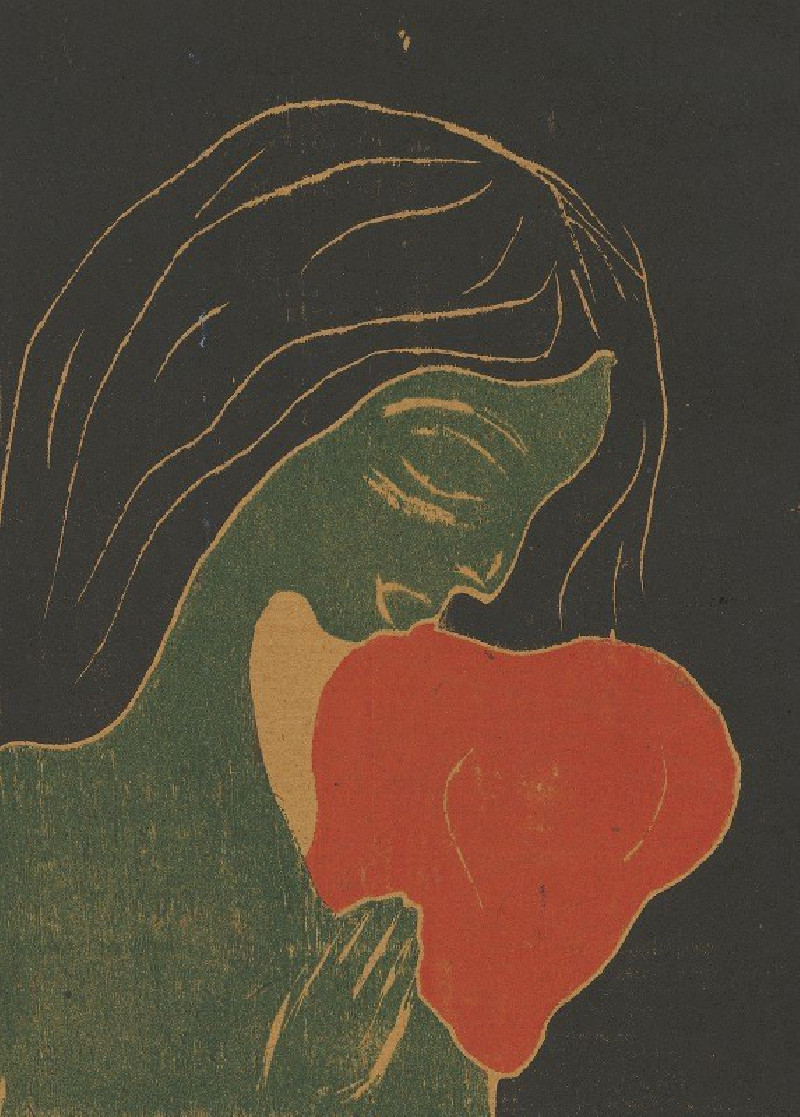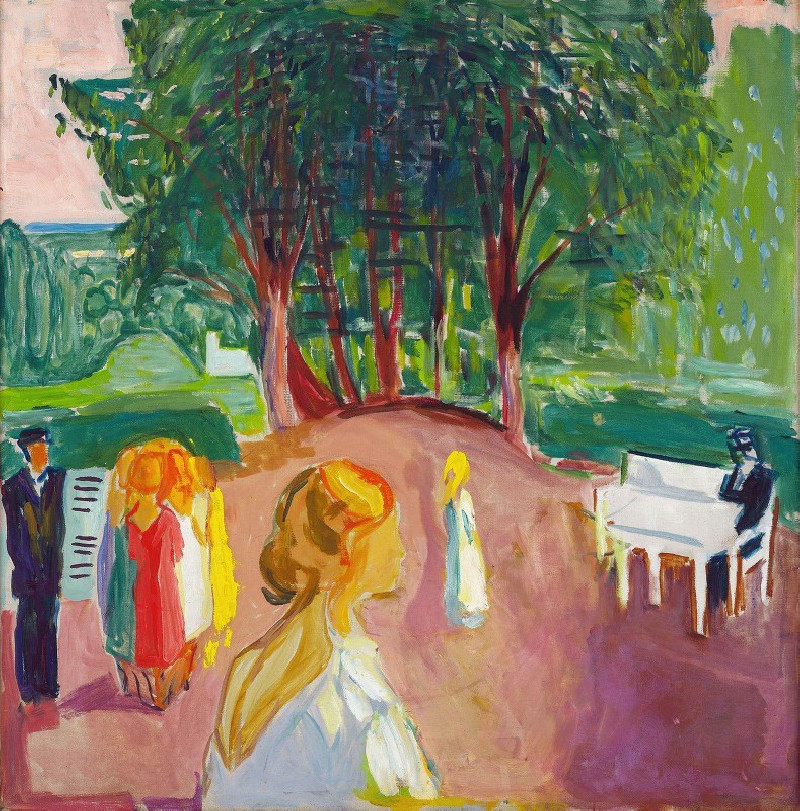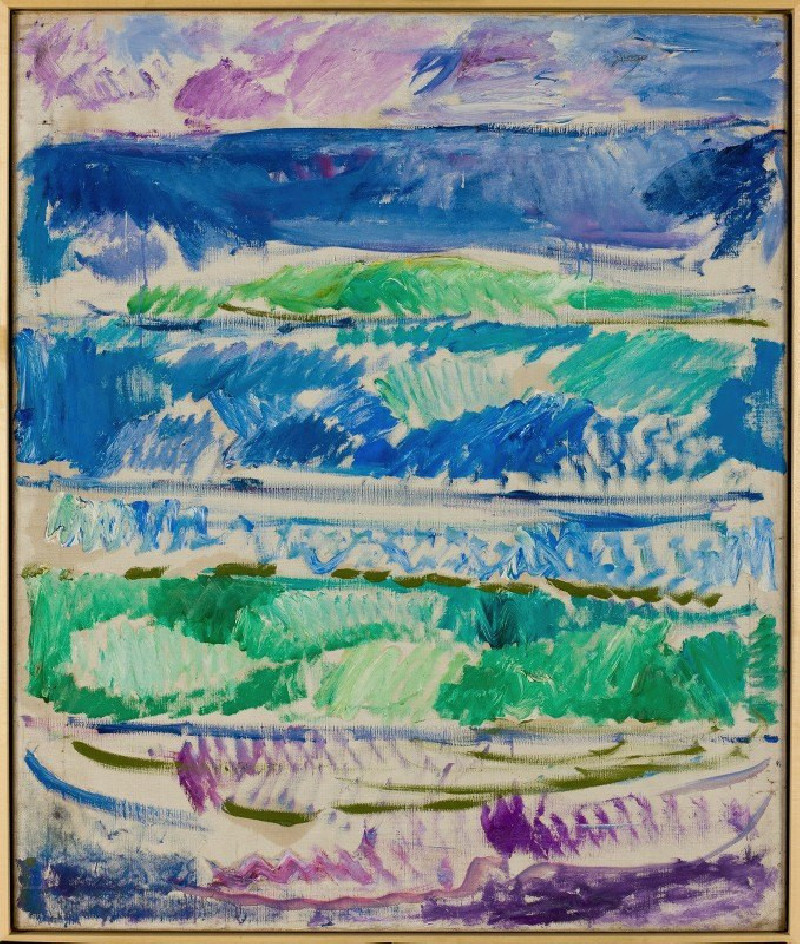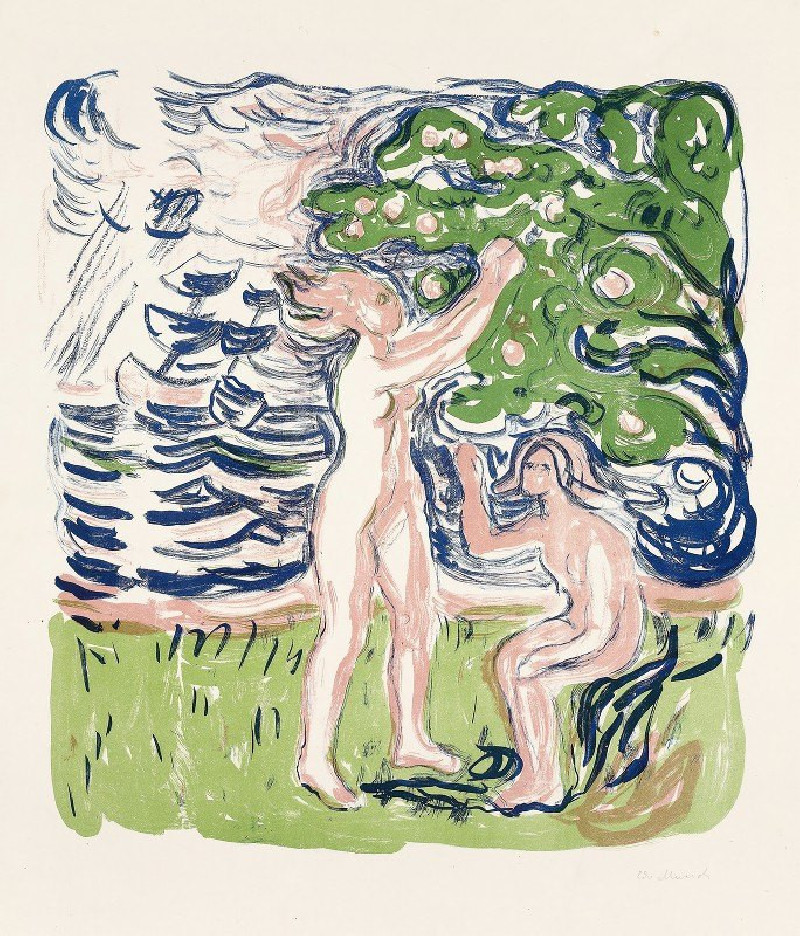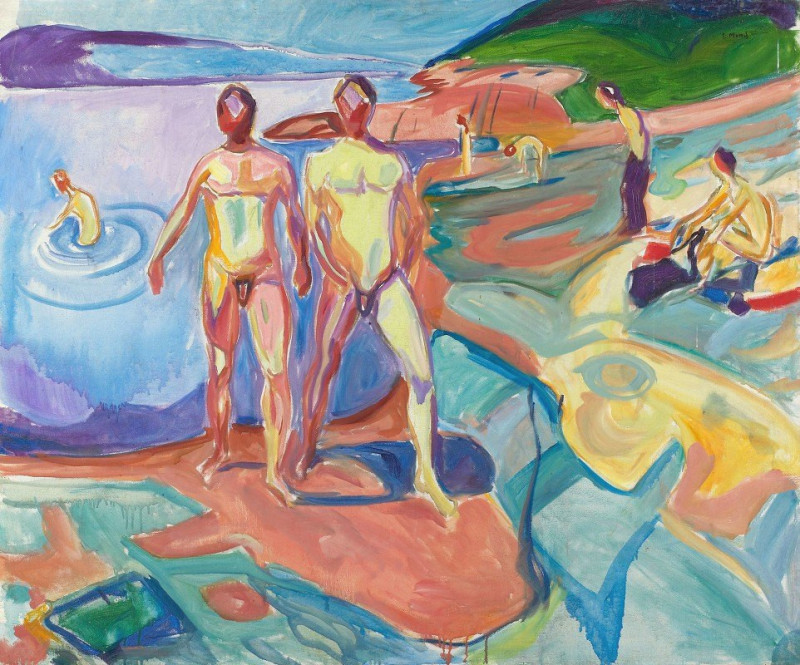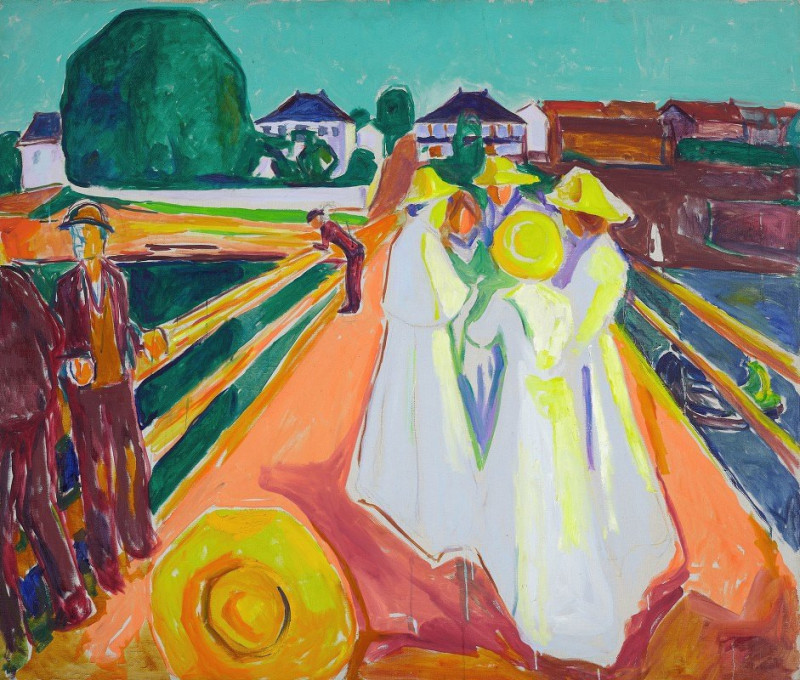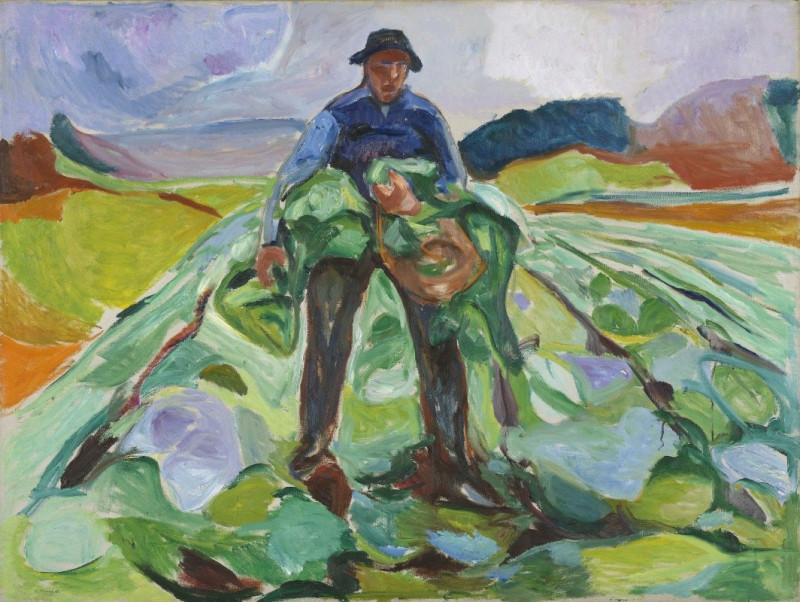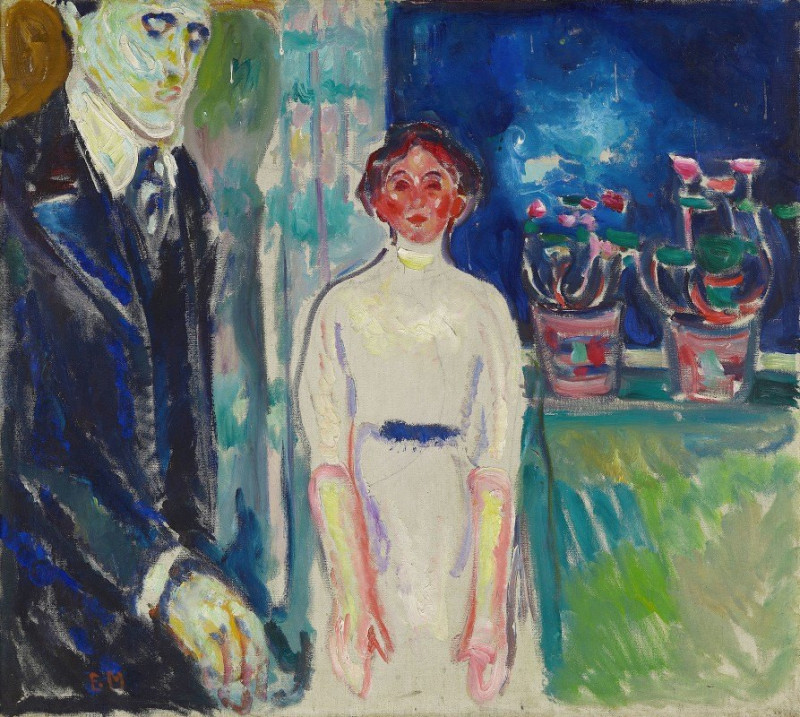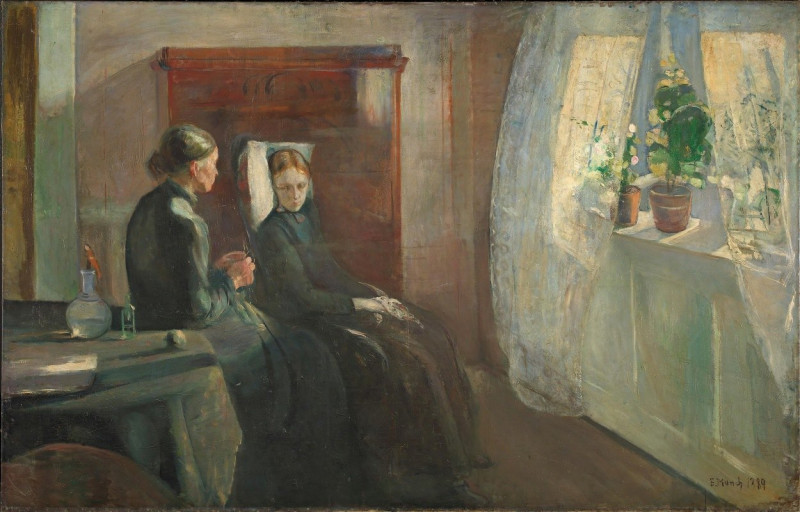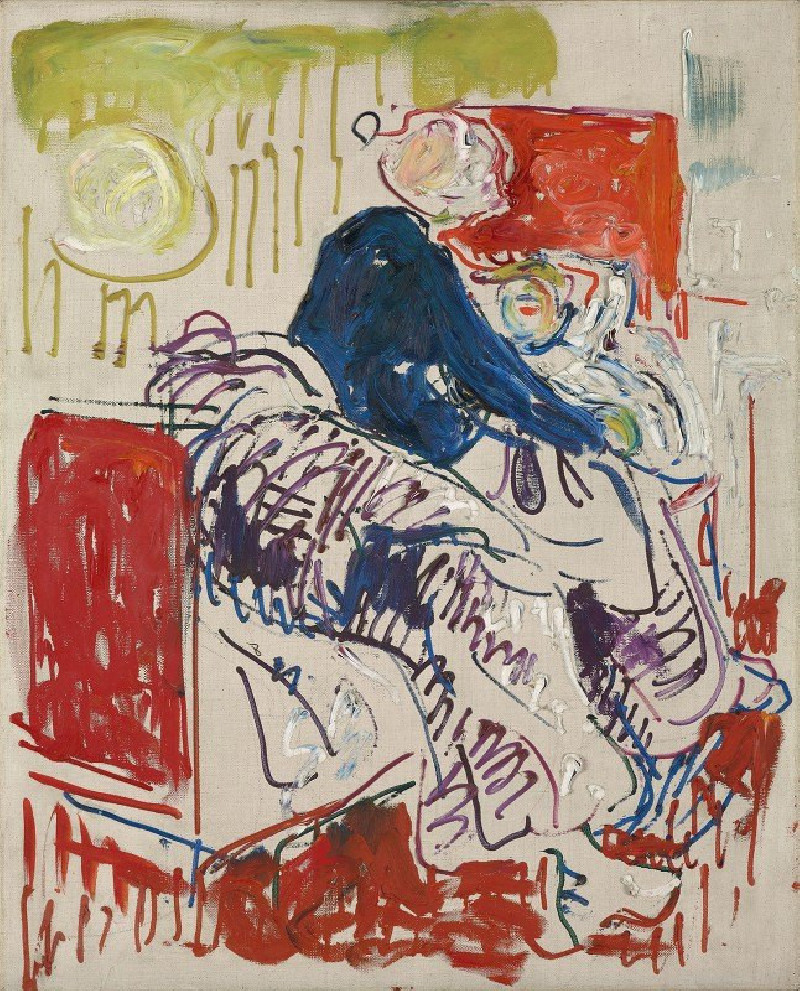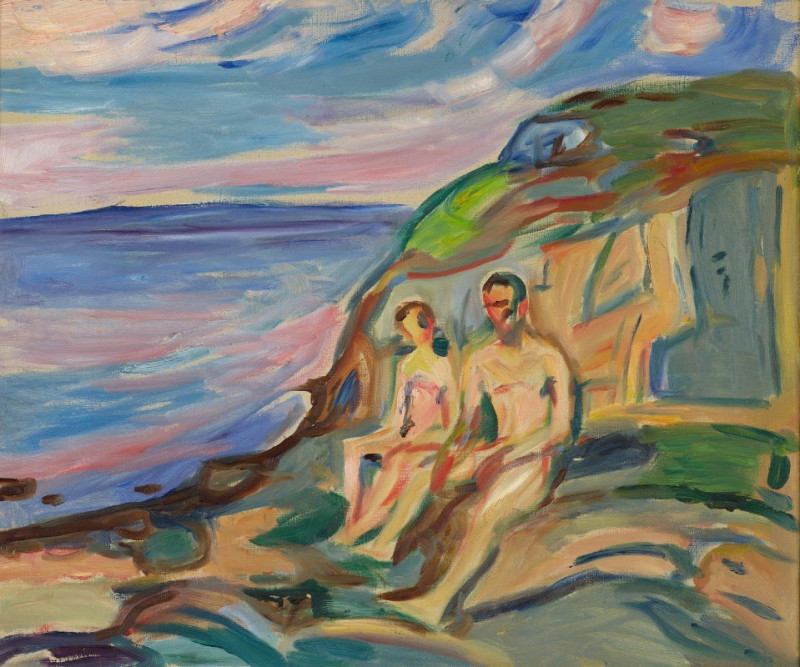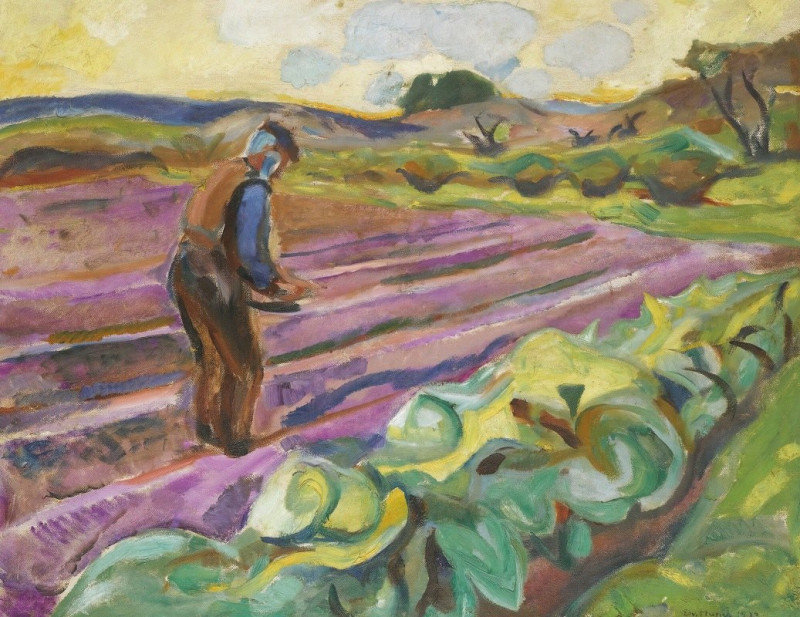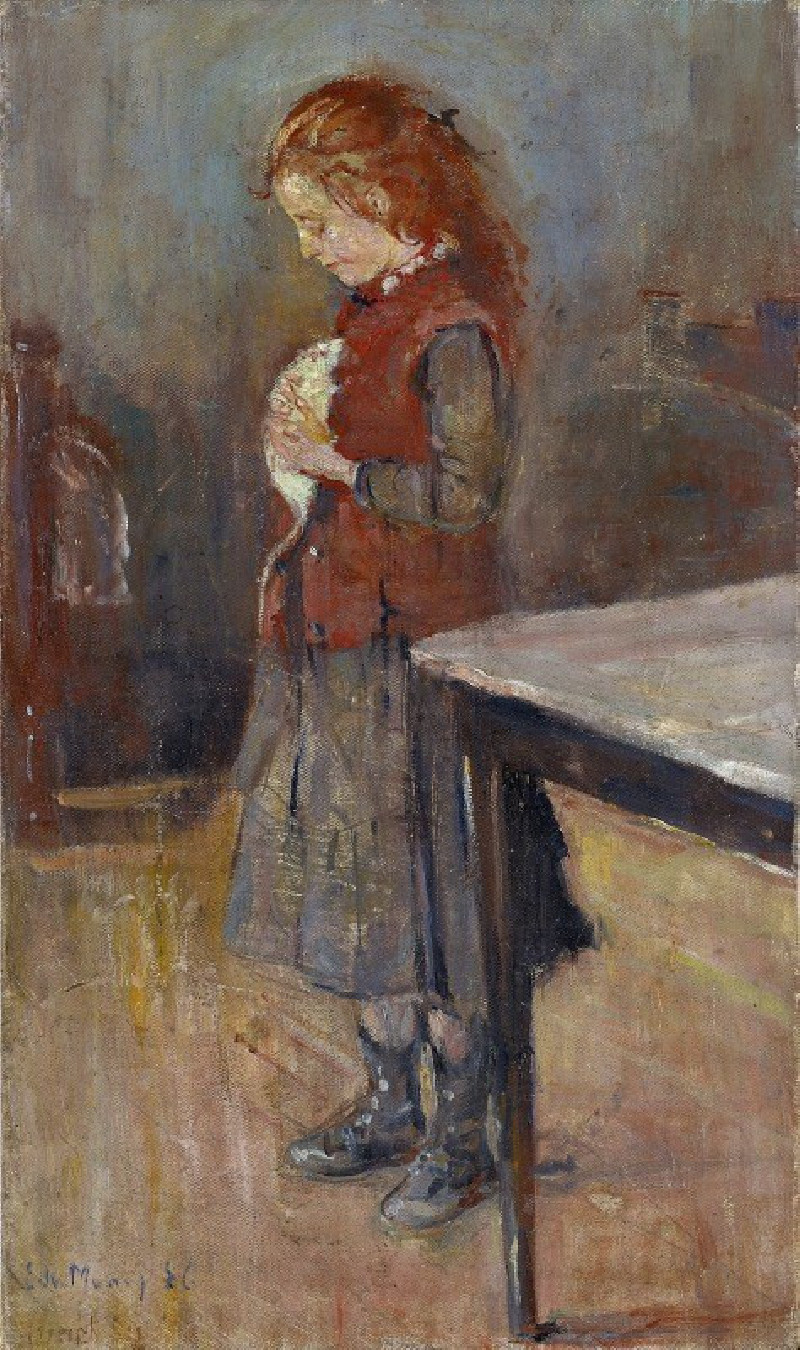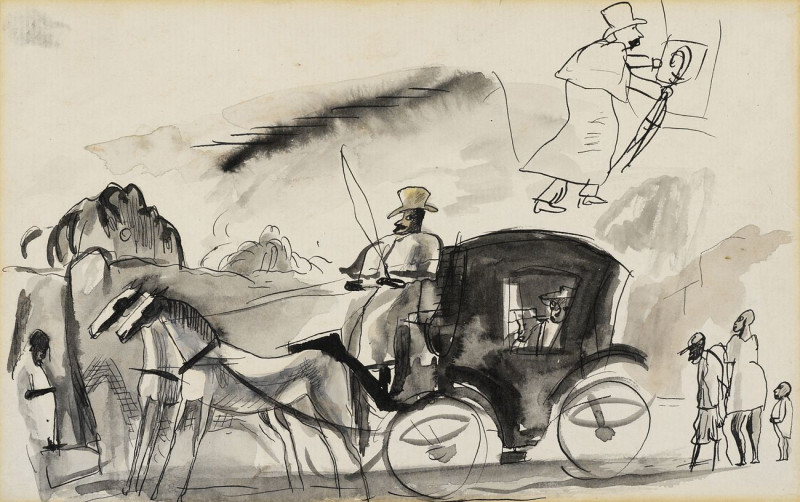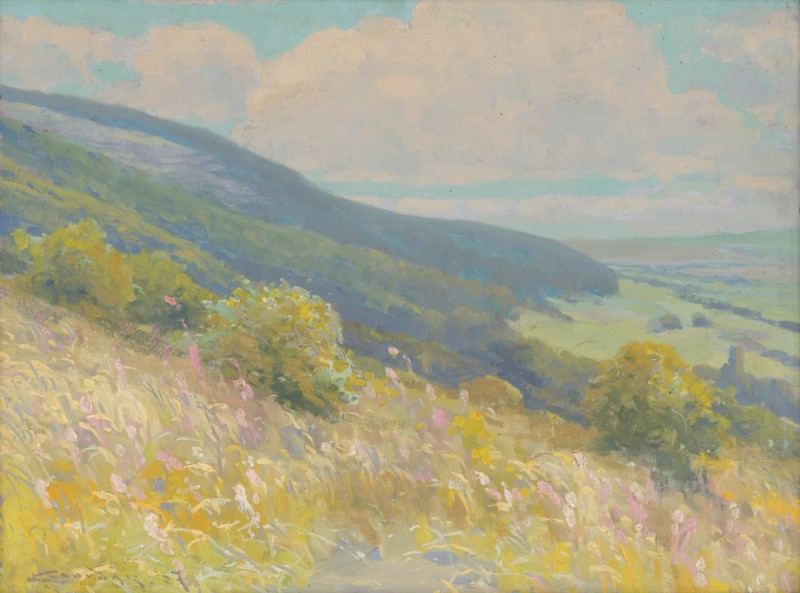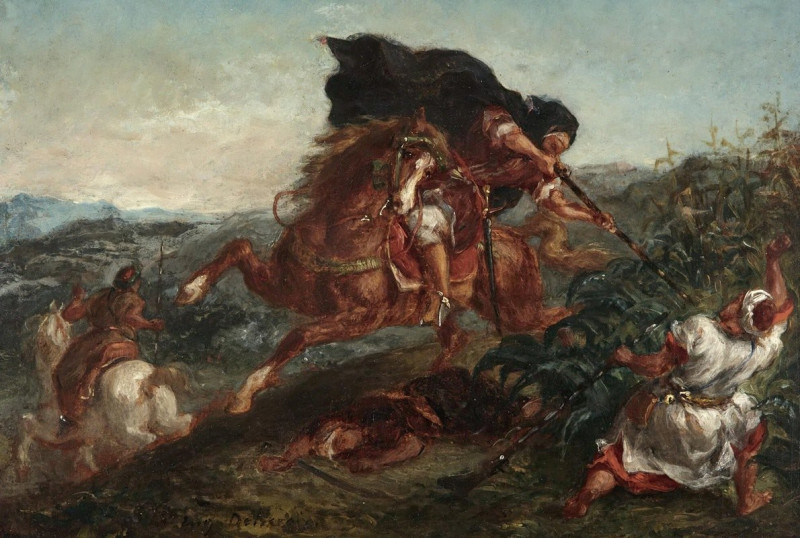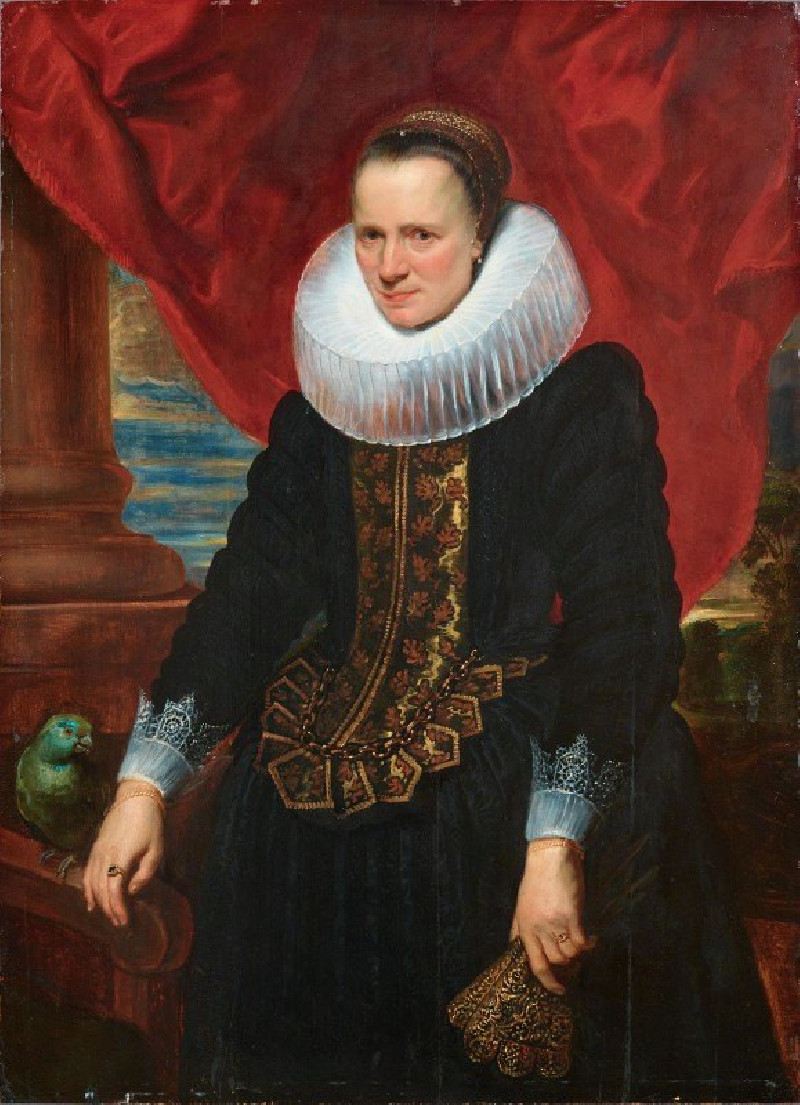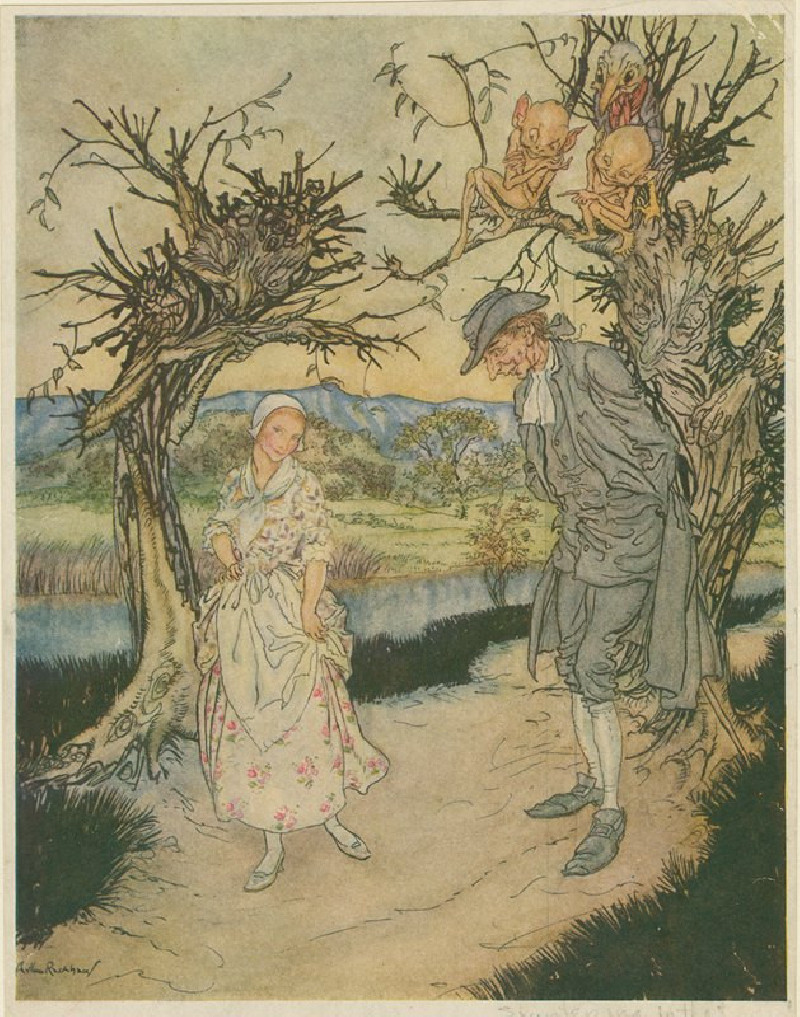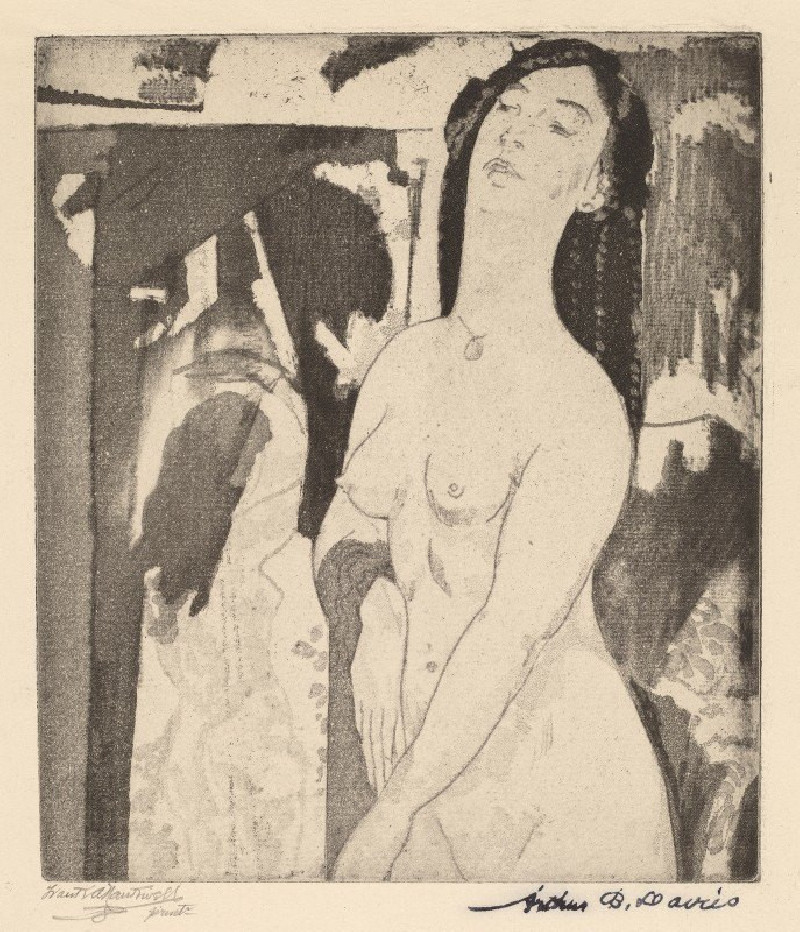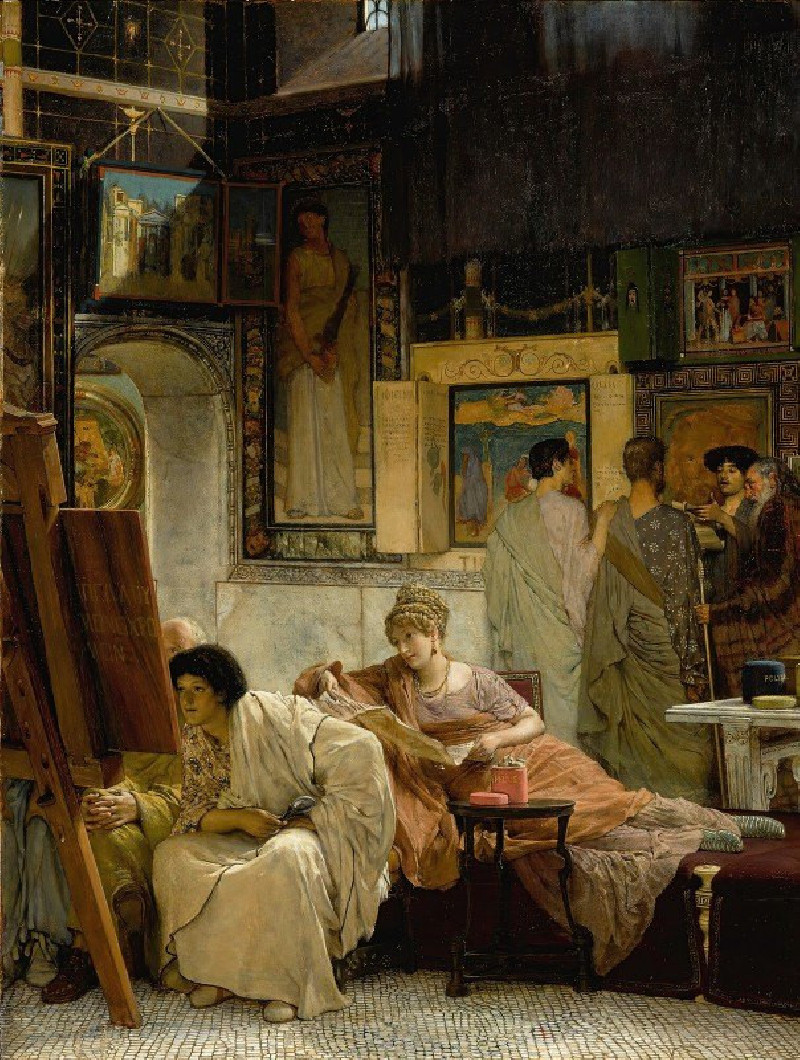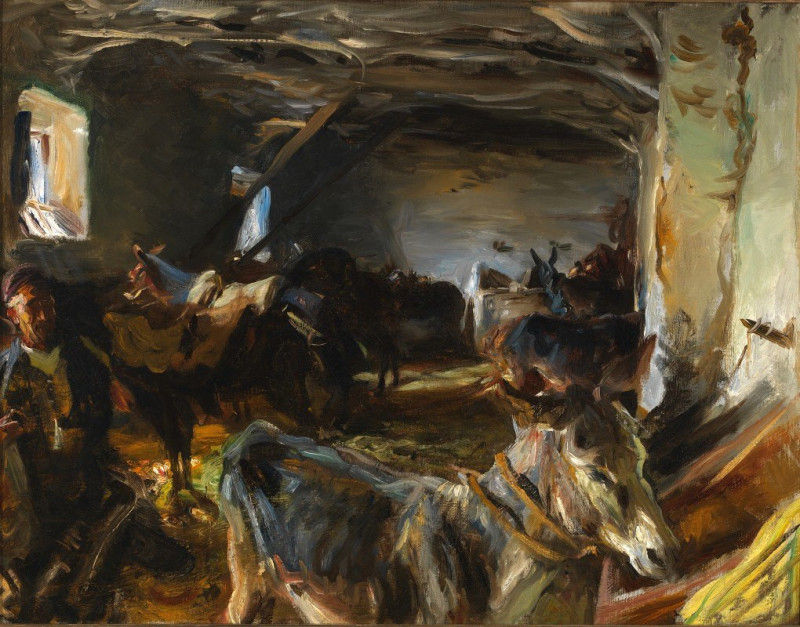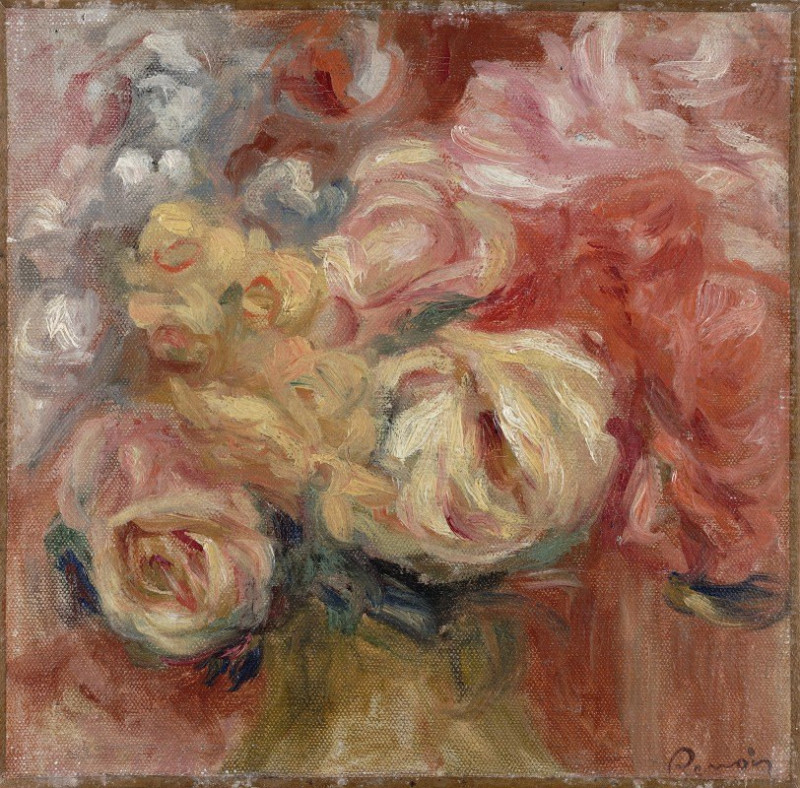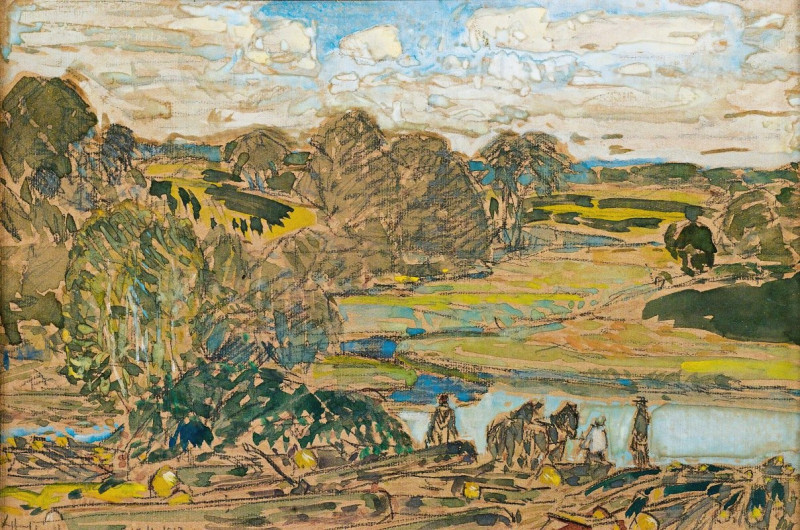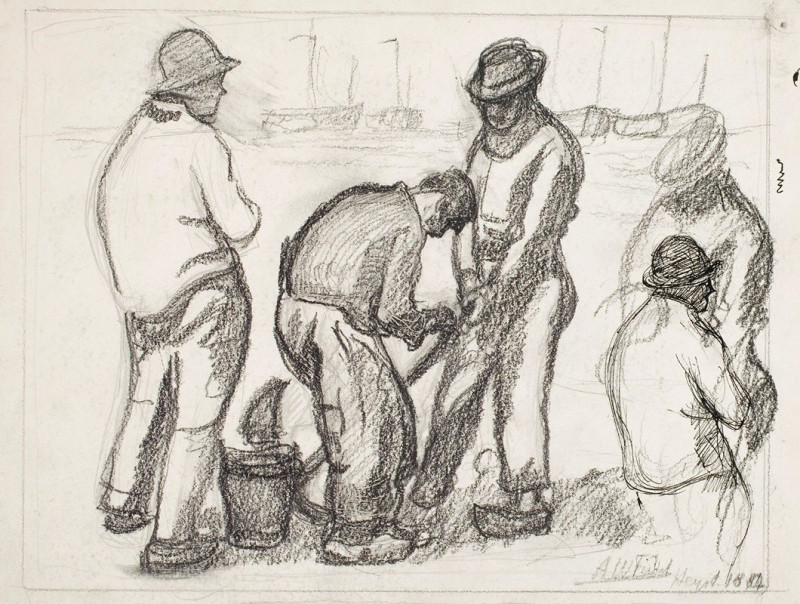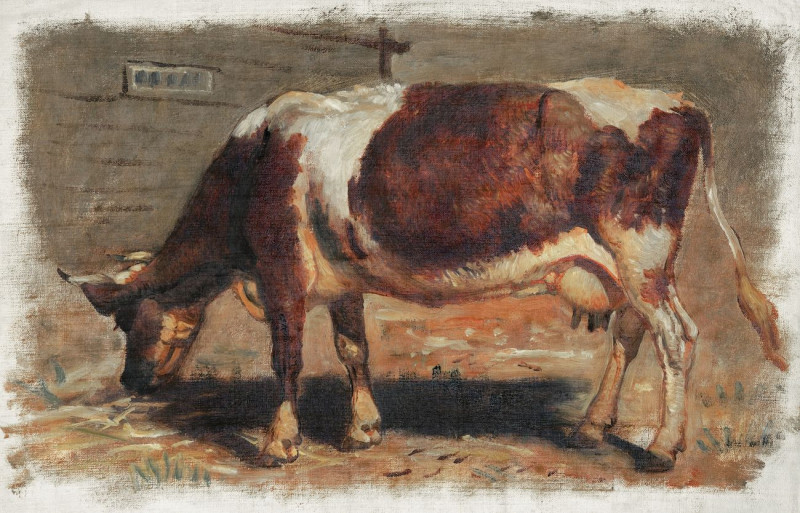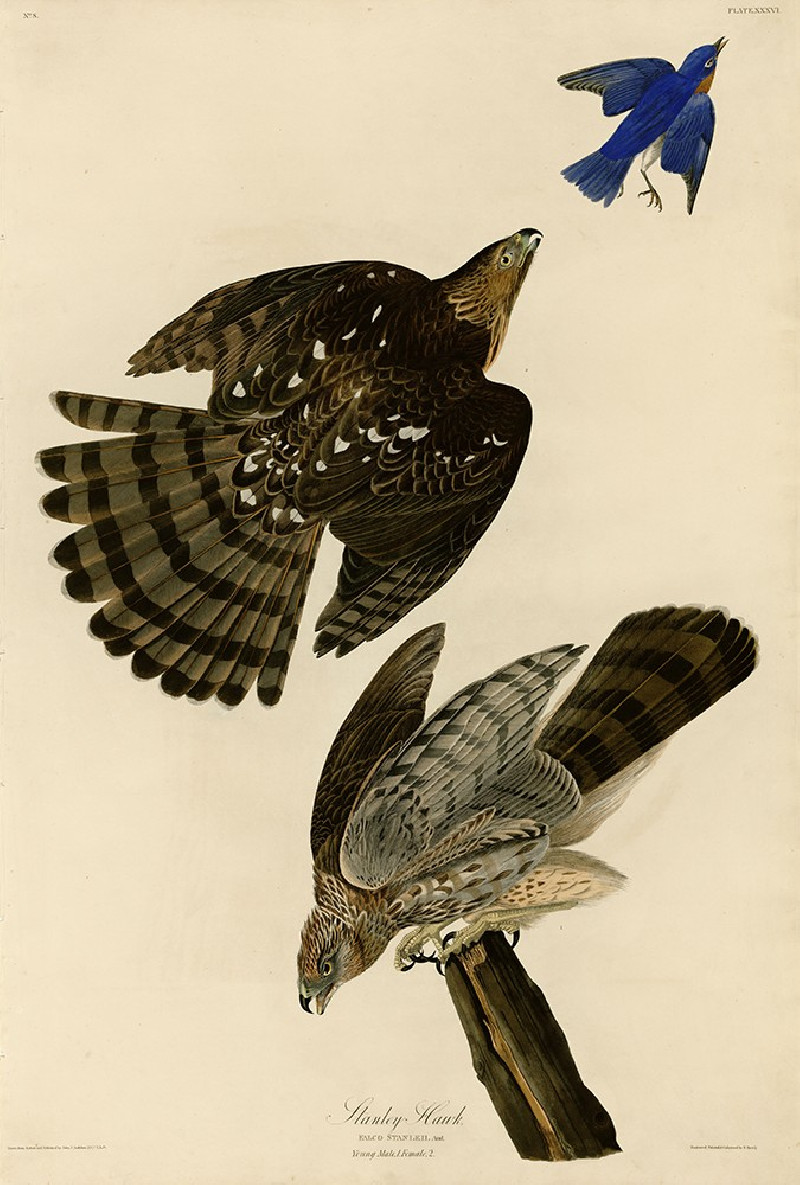The Hands (1893–94)
Technique: Giclée quality print
Recommended by our customers
More about this artwork
"The Hands," a painting by Edvard Munch, portrays a woman with her hands raised and positioned behind her head, surrounded by expressive and somewhat abstract elements. The central figure is depicted as a nude woman with a somber facial expression, standing against a vibrant and swirling backdrop. The colors around her are rich and intense, featuring deep blues, greens, and hints of red. These colors, along with the dynamic brushstrokes, create a sense of movement and emotional depth, typical of Munch’s style.This painting, like much of Munch's work, uses emotion as a focal point, communicating a complex inner world through the exaggerated lines and vivid color contrasts. The use of the hands positioned in such a way could be interpreted as a gesture of vulnerability or openness, or possibly an expression of anguish, a theme often revisited by Munch in his exploration of psychological and existential themes.The artwork engages with themes of femininity and human psychology, exploring the tension between the figure's exposed posture and her introspective expression. This piece could be seen as a reflection on identity, exposure, and the human condition, characteristic of Munch's profound and often melancholic artistic approach.
Delivery
Returns
Edvard Munch (12 December 1863 – 23 January 1944) was a Norwegian painter. His best known work, The Scream (1893), has become one of Western art's most iconic images.
His childhood was overshadowed by illness, bereavement and the dread of inheriting a mental condition that ran in the family. Studying at the Royal School of Art and Design in Kristiania (today's Oslo), Munch began to live a bohemian life under the influence of the nihilist Hans Jæger, who urged him to paint his own emotional and psychological state ('soul painting'); from this emerged his distinctive style.



